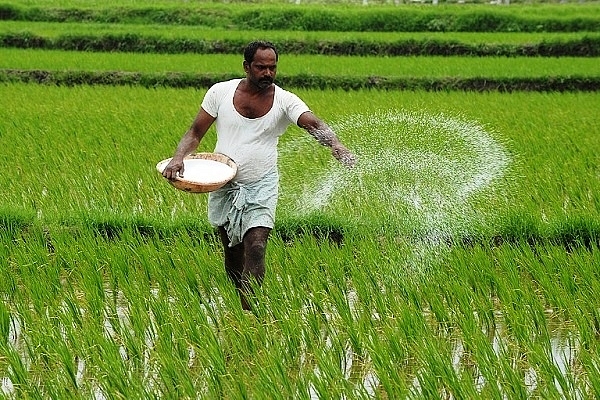News Brief
DBT 2.0 For Fertilisers: Modi Government All Set To Fix Leakages In One Of India’s Biggest Subsidy Programs

Farmer - Representative Image
To plug leakages and at the same time stem the rise in expenditure, the government is gearing up for an ambitious plan wherein it will relax the urea price and make its subsidy transfer more targeted, Financial Express has reported.
Urea is the most widely used fertiliser by Indian farmers and is used to supply the much needed nitrogen content to plants.
As part of this new plan the farmers may be asked to pay the market value of urea which is Rs 900 for a 45 Kg bag and then get the subsidy to the tune of Rs 758 instantly credited in their account.
The government is mulling this plan to potentially try and curb the rise of its revenue expenditure for urea subsidy which is expected to rise to Rs 53,629 crore in FY20.
New Pastures For A Tested Idea
DBT is a tried and tested formula employed by the central government. It has been successfully implemented in case of LPG cylinder distribution and the Public Distribution System (PDS) and also in case of fertilisers from FY19.
In FY19 the government had transferred Rs 3.06 lakh crore in form of DBT. Out of this the fertiliser component was Rs 39,230 crore.
Huge Savings
DBT has been very effective in curbing leakages from the welfare supply chain. The central government has since this scheme’s inception in 2013 saved a whopping Rs 1.34 lakh crore.
This includes saving Rs 51,000 crore in FY19 alone by eliminating leakages and ghost, duplicate beneficiaries. Even in case of fertiliser DBT the government managed to save Rs 10,000 crore.
How Is This New Proposal For Urea Different From The Existing DBT Process?
Currently, the DBT model for fertilisers only involves the government and the distribution companies. The government transfers the fertiliser subsidy to the companies after tallying their retail Point of Sale (PoS) figures.
Now the government wants to involve farmers in this process by making them the one and only point of subsidy transfer.
Thus in case of urea subsidy, the farmers would buy the urea at the market price or at a regulated amount and after making payment via the electronic PoS machine will instantly receive subsidy in their bank accounts.
This plan is part of the government’s DBT 2.0 initiative wherein subsidy worth Rs 70,000 crore will be transferred directly to the farmers’ accounts.
Preparing For DBT 2.0
In order to effectively implement DBT 2.0 the central government has created a dashboard with supply and demand details of fertilisers up until the district level.
It has also introduced a POS 3.0 software which also has multi-lingual facility for greater penetration in interior areas.
A desktop version of Aadhaar authenticated POS has also been introduced thus allowing shops to simply use a computer instead of an electronic PoS machine. In all currently there are a total of 2.24 lakh fertiliser retail shops in India.
Why Is This System Better
Only the end user who is eligible for this subsidy will get the benefit. In the current system the subsidy chain stops at the retail level which may lead to non-farmers getting benefits as well.
It may also involve a cap on total fertiliser subsidy eligibility per hectare to prevent overuse or hoarding of subsidised urea.
For example if “x units” of fertiliser is required for one hectare of land, a farmer who owns 3 hectare of land will only be eligible for subsidy on “3x units” of fertilisers.
The government has already saved Rs 10,000 crore in its first phase of fertiliser DBT implementation, it remains to be seen by what magnitude this figure increases via DBT 2.0.
Introducing ElectionsHQ + 50 Ground Reports Project
The 2024 elections might seem easy to guess, but there are some important questions that shouldn't be missed.
Do freebies still sway voters? Do people prioritise infrastructure when voting? How will Punjab vote?
The answers to these questions provide great insights into where we, as a country, are headed in the years to come.
Swarajya is starting a project with an aim to do 50 solid ground stories and a smart commentary service on WhatsApp, a one-of-a-kind. We'd love your support during this election season.
Click below to contribute.
Latest